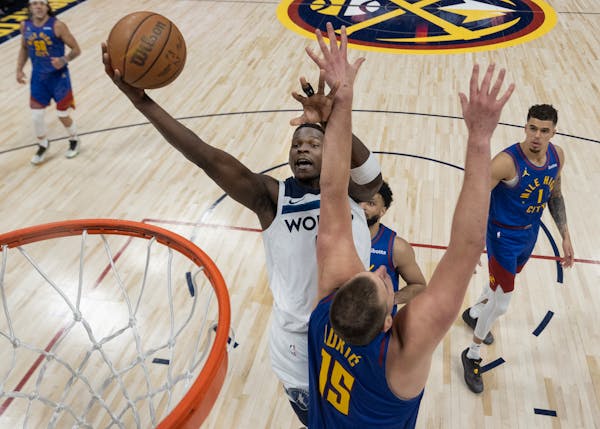With her long, dark hair and wide smile, Sarah Betts seems like your average high school freshman, juggling academics, sports and practicing her violin.
But in addition to watching movies and texting friends, Sarah, 14, has spent her summers, nights and weekends for the past two years inventing an orthopedic hand-exercise device to bring relief to people with arthritis, stroke victims and others.
She's already conducted a study to test her prototype and is waiting to hear whether her invention, called ViEx, will be granted a patent.
Meanwhile, physicians at Twin Cities Orthopedics and the University of Minnesota are already using it with patients.
Her inspiration for the ViEx — a device that helps strengthen users' hands and joints by having them press down on violin strings — came from her own experience, both as a violinist and a kid with rheumatoid arthritis, she said.
"I noticed when I was 12 … that my left hand was less swollen and less painful than my right hand," she said, adding that she uses fingers on her left hand to hold down strings as she plays.
She wondered if all that exercise wasn't the reason her left hand felt better, stronger. She decided to test her hypothesis by creating a device that other arthritis sufferers could use, too. She went through 15 versions before settling on the current model, shaped like a violin and made from wood from the hardware store.
Along the way, several people told her the invention wouldn't work — couldn't work — especially on rheumatoid arthritis, which is caused by an immune disorder.
Sarah wasn't deterred. "I just love that Sarah was like, 'Well, let me try,' " said Annie Betts, her mother. "She's the hardest worker I know."
Susan Peel, her orchestra teacher at the Convent of the Visitation School in Mendota Heights, wasn't surprised at Sarah's ingenuity.
"She's just pretty much extraordinary all around," Peel said. "She thinks far beyond what a ninth-grader would think like."
Perseverance pays off
Sarah has long had an interest in science and medicine. She was a state and national science fair winner in middle school, scoring in the top 5 percent nationally.
"I kind of ruined our kitchen because I liked to make potions," she said of her early experiments.
One science project involved testing the effects of fish oil on the myelin, the protective substance coating the nerves, of lab rats.
She knew that after she built her ViEx prototype, she had to test it.
Several failed attempts at finding study participants failed, but she finally enlisted neighbors, her grandparents' friends and members of her church. She had them use the device to complete a daily exercise regimen she designed with help from occupational therapists.
At the study's end, she found that 95 percent of patients had improved hand function and strength and 70 percent had reduced joint pain, she said.
One woman could barely move her hands when she started, but by the end could open containers. "A lot of them found it really helpful and it changed their quality of life," she said.
Another source of motivation was watching her 90-year-old grandparents struggle with arthritis and wanting to help them, she said.
Some 50 million Americans have arthritis, mostly osteoarthritis, which comes as joints wear out.
That means that a simple, inexpensive device could have mass appeal. Athletes and those with disabilities could use it, she said.
While there are other exercise devices available, "The reason my device is more beneficial than those is that this specifically targets the two joints that are mainly affected by arthritis."
She's discussed her study and the device with University of Minnesota physicians, surgeons at Twin Cities Orthopedics and even CEOs, she said.
One surgeon called her device "original and practical" and said "her understanding of the entire process has reflected ability well beyond her age." He said therapists will use it during physical therapy.
"Overall, people were pretty impressed, so that was pretty cool," Sarah said.
The whole experience taught her to "stick with it, because it's hard and you'll experience a lot of setbacks," she said. "But it was worth it to see how many people truly benefited from it."
'Why not?'
Now that she's filled out the 80-page patent application and submitted it, it's really just a waiting game until the patent office contacts her, she said.
It was essential to patent the device because she wants to eventually sell it to a company. Right now, it costs less than $3 to make, but she wants to make it even cheaper, she said.
She said it would be fun to do another project someday, but for now, she's busy playing golf, ski-racing and making music.
Sarah maintains that her tenacity isn't anything special.
Where does she get her motivation? "Curiosity, I guess, and why not?" she said. "I have just as many hours in a day as anyone else."
Erin Adler • 952-746-3283

WWE releases Gable Steveson, closing a chapter for former Gophers sensation

Star Wars superfans celebrate May 4th with ritual movie marathons, blue milk, costumes and community

St. Paul's Arborators play in the treetops: 'We're the world's only tree-climbing brass band'
Carver County deputies shoot man armed with knife outside Chanhassen home

